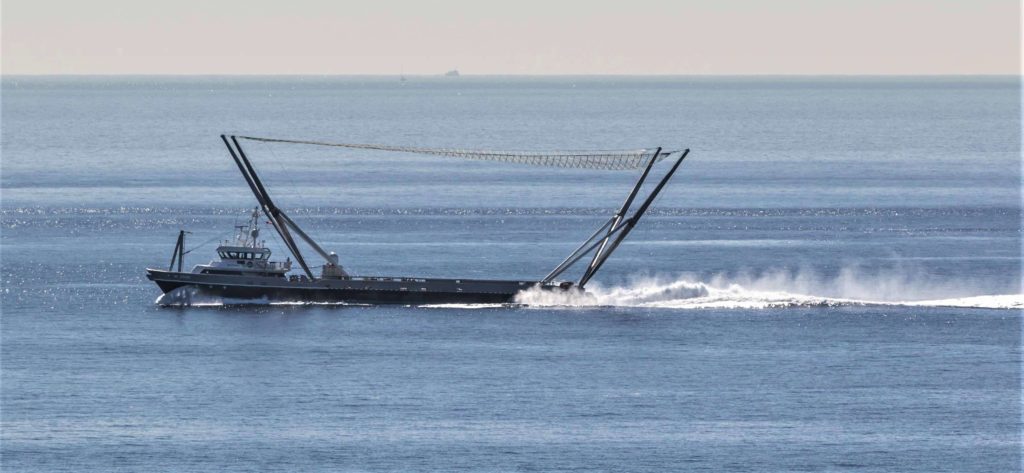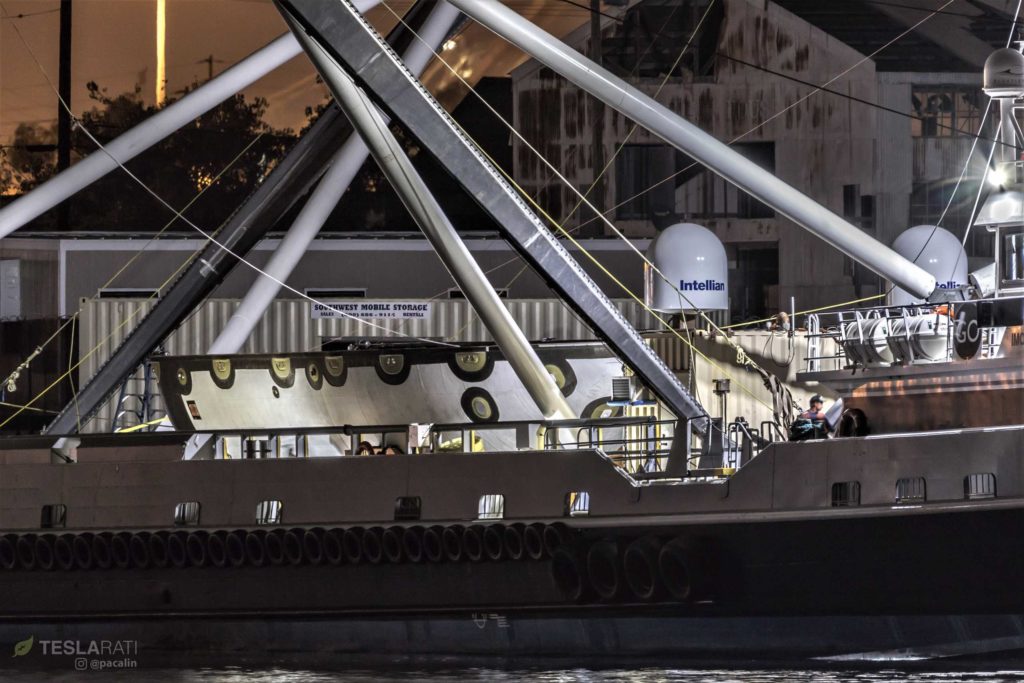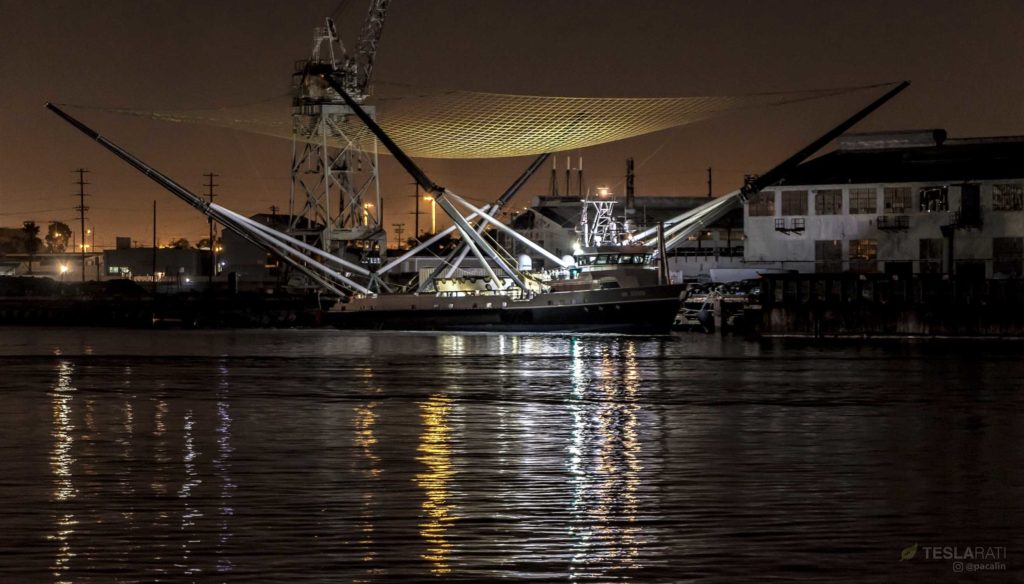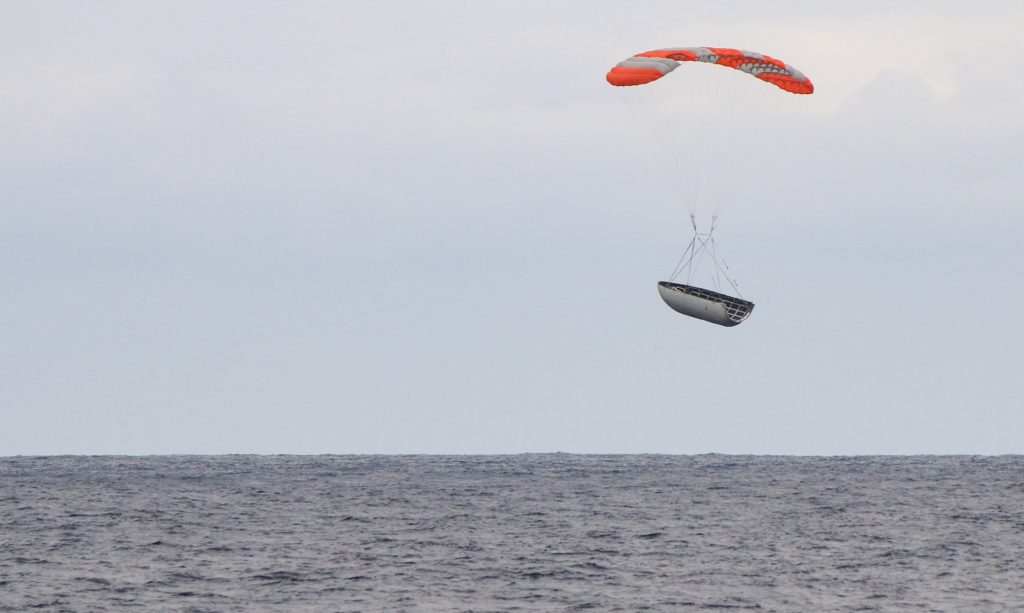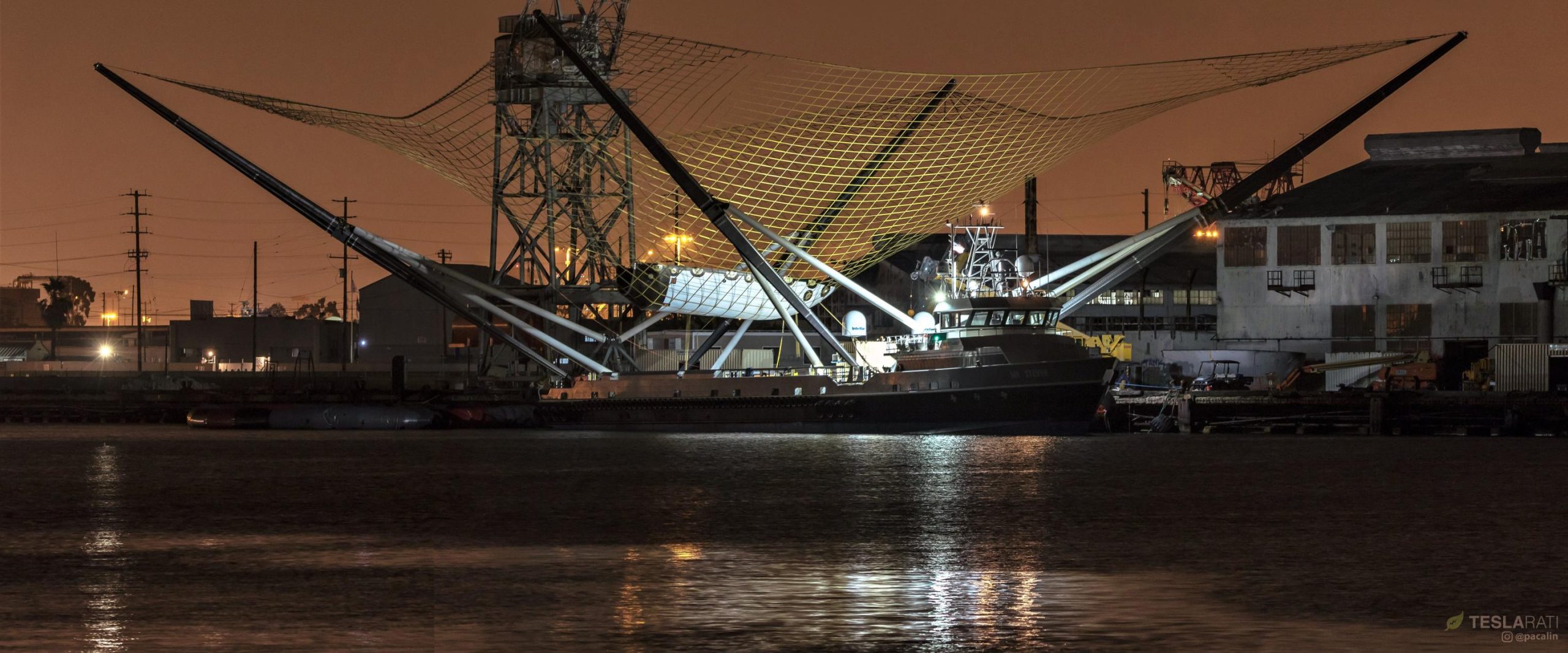
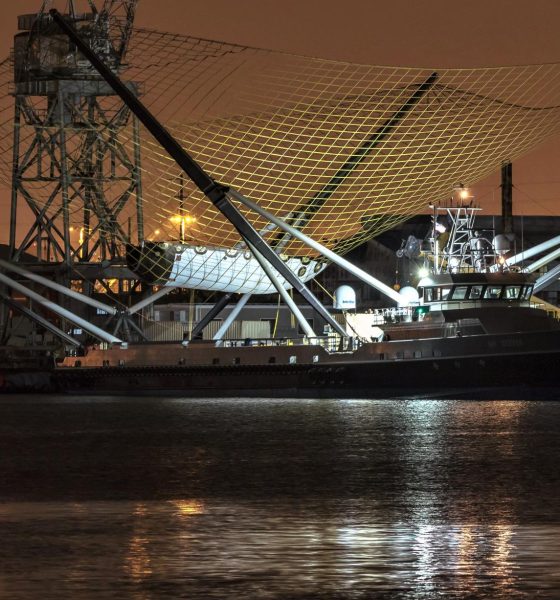
News
SpaceX fairing recovery vessel Mr. Steven’s owner abruptly files for bankruptcy
The legal owners of SpaceX’s sole fairing recovery vessel are in dire financial straits, signaled by business owner Steven Miguez’s decision to file for bankruptcy as a last chance of protecting Seatran Marine, a company which owns and leases eight utility vessels known as crew boats.
Mr. Steven, leased by SpaceX in late 2017, is one of those crew boats, although he has since been dramatically modified to support a series of consecutively larger arms, nets, and other various components in hopes of eventually catching Falcon 9 payload fairings out of the air. While there is most likely no serious risk of SpaceX actually losing access to Mr. Steven, this development still raises the question of what will happen to the ship in the near and more distant future.
The bankruptcy paperwork filed is chapter 11 – "proposing a plan of reorganisation to keep a business alive." The paperwork protects Mr Steven from foreclosure for now so there is no immediate change to anything.
— Gav Cornwell (@SpaceOffshore) November 21, 2018
As indicated in the tweet above, the ultimate outcome – at least for the time being – is simple uncertainty, as Chapter 11 bankruptcy filings will prevent Miguez from having to foreclose on Mr. Steven in the short term. If the Miguez family can rapidly find a solution for its money troubles, all could proceed unchanged. However, with all due respect to the owners and to Seatran Marine’s employees, Chapter 11 bankruptcy simply is not easily undone and is generally a last resort to be used only after all alternative solutions have been exhausted. Chapter 11 bankruptcy proceedings can take anywhere from a few months to several years to complete, tending to take longer as the scale and complexity of the filing party grows.
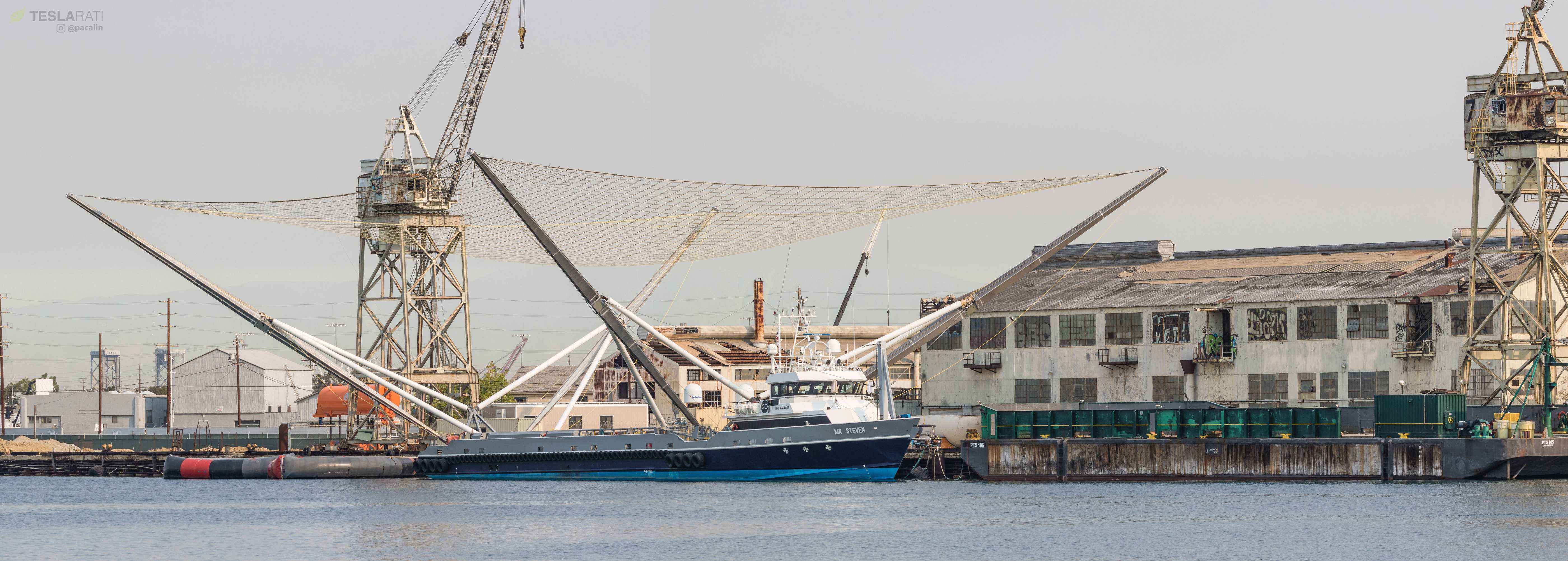
Making the best of a bad situation
Leased by Seatran to operator Guice Offshore (GO), SpaceX’s primary fleet manager on both coasts, GO (and thus SpaceX) had contracted to pay at least $3300 a day to use Mr. Steven, although that contract expired in October 2018. The new terms are unclear and it’s unknown if a replacement contract has yet to be signed.
Given the situation at hand and despite the sad financial circumstances facing the vessel’s owners, SpaceX may be in the best position yet to purchase Mr. Steven outright, assuming the company expects to continue attempting Falcon fairing recoveries for the indefinite future. In 2015, namesake Steven Miguez took out a $22.5M loan to cover Mr. Steven’s construction costs, offering a rough price ceiling for the modern, high-performance Fast Supply Vessel (FSV). While the most obvious interested buyer would be GO itself, it’s unlikely that the company has a sum of that size to offer, meaning that GO would need to take out its own loan to acquire the ship.
- Mr. Steven took to sea to test out a new recovery-related appendage – purpose unknown – on November 12. (Pauline Acalin)
- After an afternoon attempting to catch Falcon fairings dropped by a helicopter, Mr. Steven returned to port on Nov. 14. (Pauline Acalin)
- (Pauline Acalin)
- One half of SpaceX’s Iridium-6/GRACE-FO just moments before touchdown on the Pacific Ocean. (SpaceX)
SpaceX, on the other hand, quite literally just closed a debt funding round of $250M, terms unknown, leaving the company more than enough liquid capital to enable a cash transaction assuming there is some interest in becoming Mr. Steven’s legal owner. SpaceX already owns its two operational autonomous spaceport drone ships (ASDS) outright and has extensively modified Mr. Steven to support fairing recovery, quite literally building its prototype recovery apparatus around the rented vessel. As the vessel’s new owner, SpaceX could likely keep contracting to GO for general operations and support, perhaps even continuing to lease Mr. Steven to GO to create as few waves as possible.
By selling Mr. Steven outright, Miguez could likely acquire more than enough funds to preserve Seatran Marine and its subsidiaries long enough to recover his financial footing and return his companies to a stable state.
Business as usual?
In the meantime, it does not appear that these unfortunate legal issues have had a tangible impact on GO and SpaceX’s near-term ability to operate Mr. Steven. Around November 20th, SpaceX and GO crew performed the most recent of a series of Falcon fairing recovery tests, dropping a half from a helicopter to provide Mr. Steven a comparatively controlled environment to practice catches. Earlier this month, CEO Elon Musk appeared to imply that Mr. Steven would not attempt to catch Falcon 9’s fairing halves following the West Coast launch of SSO-A, at the time scheduled for November 19th.
Since then, SSO-A’s flight-proven Falcon 9 launch has slipped a full two weeks thanks to a combination of additional inspections and bad weather, now targeting launch NET December 2. It’s a stretch, but there is at least a slight chance that SSO-A’s excessive launch slips could mean that Mr. Steven will be able to attempt fairing recovery after all, at least per Musk’s suggestion that SpaceX would “try again next month”.
https://www.instagram.com/p/BqtGWFxADOk/

News
Tesla FSD fleet is nearing 7 billion total miles, including 2.5 billion city miles
As can be seen on Tesla’s official FSD webpage, vehicles equipped with the system have now navigated over 6.99 billion miles.

Tesla’s Full Self-Driving (Supervised) fleet is closing in on almost 7 billion total miles driven, as per data posted by the company on its official FSD webpage.
These figures hint at the massive scale of data fueling Tesla’s rapid FSD improvements, which have been quite notable as of late.
FSD mileage milestones
As can be seen on Tesla’s official FSD webpage, vehicles equipped with the system have now navigated over 6.99 billion miles. Tesla owner and avid FSD tester Whole Mars Catalog also shared a screenshot indicating that from the nearly 7 billion miles traveled by the FSD fleet, more than 2.5 billion miles were driven inside cities.
City miles are particularly valuable for complex urban scenarios like unprotected turns, pedestrian interactions, and traffic lights. This is also the difference-maker for FSD, as only complex solutions, such as Waymo’s self-driving taxis, operate similarly on inner-city streets. And even then, incidents such as the San Francisco blackouts have proven challenging for sensor-rich vehicles like Waymos.
Tesla’s data edge
Tesla has a number of advantages in the autonomous vehicle sector, one of which is the size of its fleet and the number of vehicles training FSD on real-world roads. Tesla’s nearly 7 billion FSD miles then allow the company to roll out updates that make its vehicles behave like they are being driven by experienced drivers, even if they are operating on their own.
So notable are Tesla’s improvements to FSD that NVIDIA Director of Robotics Jim Fan, after experiencing FSD v14, noted that the system is the first AI that passes what he described as a “Physical Turing Test.”
“Despite knowing exactly how robot learning works, I still find it magical watching the steering wheel turn by itself. First it feels surreal, next it becomes routine. Then, like the smartphone, taking it away actively hurts. This is how humanity gets rewired and glued to god-like technologies,” Fan wrote in a post on X.
News
Tesla starts showing how FSD will change lives in Europe
Local officials tested the system on narrow country roads and were impressed by FSD’s smooth, human-like driving, with some calling the service a game-changer for everyday life in areas that are far from urban centers.

Tesla has launched Europe’s first public shuttle service using Full Self-Driving (Supervised) in the rural Eifelkreis Bitburg-Prüm region of Germany, demonstrating how the technology can restore independence and mobility for people who struggle with limited transport options.
Local officials tested the system on narrow country roads and were impressed by FSD’s smooth, human-like driving, with some calling the service a game-changer for everyday life in areas that are far from urban centers.
Officials see real impact on rural residents
Arzfeld Mayor Johannes Kuhl and District Administrator Andreas Kruppert personally tested the Tesla shuttle service. This allowed them to see just how well FSD navigated winding lanes and rural roads confidently. Kruppert said, “Autonomous driving sounds like science fiction to many, but we simply see here that it works totally well in rural regions too.” Kuhl, for his part, also noted that FSD “feels like a very experienced driver.”
The pilot complements the area’s “Citizen Bus” program, which provides on-demand rides for elderly residents who can no longer drive themselves. Tesla Europe shared a video of a demonstration of the service, highlighting how FSD gives people their freedom back, even in places where public transport is not as prevalent.
What the Ministry for Economic Affairs and Transport says
Rhineland-Palatinate’s Minister Daniela Schmitt supported the project, praising the collaboration that made this “first of its kind in Europe” possible. As per the ministry, the rural rollout for the service shows FSD’s potential beyond major cities, and it delivers tangible benefits like grocery runs, doctor visits, and social connections for isolated residents.
“Reliable and flexible mobility is especially vital in rural areas. With the launch of a shuttle service using self-driving vehicles (FSD supervised) by Tesla in the Eifelkreis Bitburg-Prüm, an innovative pilot project is now getting underway that complements local community bus services. It is the first project of its kind in Europe.
“The result is a real gain for rural mobility: greater accessibility, more flexibility and tangible benefits for everyday life. A strong signal for innovation, cooperation and future-oriented mobility beyond urban centers,” the ministry wrote in a LinkedIn post.
News
Tesla China quietly posts Robotaxi-related job listing
Tesla China is currently seeking a Low Voltage Electrical Engineer to work on circuit board design for the company’s autonomous vehicles.

Tesla has posted a new job listing in Shanghai explicitly tied to its Robotaxi program, fueling speculation that the company is preparing to launch its dedicated autonomous ride-hailing service in China.
As noted in the listing, Tesla China is currently seeking a Low Voltage Electrical Engineer to work on circuit board design for the company’s autonomous vehicles.
Robotaxi-specific role
The listing, which was shared on social media platform X by industry watcher @tslaming, suggested that Tesla China is looking to fill the role urgently. The job listing itself specifically mentions that the person hired for the role will be working on the Low Voltage Hardware team, which would design the circuit boards that would serve as the nervous system of the Robotaxi.
Key tasks for the role, as indicated in the job listing, include collaboration with PCB layout, firmware, mechanical, program management, and validation teams, among other responsibilities. The role is based in Shanghai.
China Robotaxi launch
China represents a massive potential market for robotaxis, with its dense urban centers and supportive policies in select cities. Tesla has limited permission to roll out FSD in the country, though despite this, its vehicles have been hailed as among the best in the market when it comes to autonomous features. So far, at least, it appears that China supports Tesla’s FSD and Robotaxi rollout.
This was hinted at in November, when Tesla brought the Cybercab to the 8th China International Import Expo (CIIE) in Shanghai, marking the first time that the autonomous two-seater was brought to the Asia-Pacific region. The vehicle, despite not having a release date in China, received a significant amount of interest among the event’s attendees.
